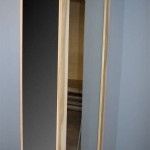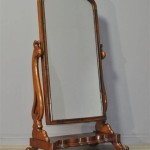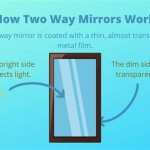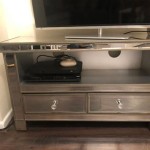How To Hang a Heavy Mirror On The Wall Without Nails
Hanging a heavy mirror without nails might seem daunting, but with the right tools and techniques, it's a manageable task. This approach offers flexibility for renters and those who prefer not to damage their walls. Several effective methods accommodate various mirror sizes and wall types.
1. Adhesive Strips Designed for Heavy Items
Heavy-duty adhesive strips specifically engineered for mirrors and picture frames provide a strong and reliable solution. These strips utilize advanced adhesive technology to hold substantial weight securely. Check the weight limit specified on the product packaging to ensure it's appropriate for the mirror's weight. Carefully clean the wall surface with rubbing alcohol to remove any dust, grease, or debris that might interfere with adhesion. Follow the manufacturer's instructions for applying the strips to the back of the mirror and affixing it to the wall. Allow the adhesive to set fully before releasing the mirror.
2. Mirror Mounting Tape
Double-sided mounting tape designed for mirrors offers another no-nails solution. This tape features a strong adhesive on both sides, creating a secure bond between the mirror and the wall. Like adhesive strips, ensure the tape's weight capacity exceeds the mirror's weight. Clean the wall thoroughly before application to optimize adhesion. Apply the tape to the back of the mirror in vertical strips, following the manufacturer’s instructions, then carefully position the mirror on the wall and press firmly.
3. Heavy-Duty Hooks with Adhesive Backing
Specialized adhesive hooks designed to support heavier items can be used in conjunction with D-rings or wire hangers attached to the back of the mirror. These hooks often feature a locking mechanism that adds extra security. Verify the hook's weight limit before proceeding. After cleaning the wall, firmly press the adhesive backing of the hook onto the wall and allow it to set completely. Then, hang the mirror on the hook, ensuring it's securely in place.
4. Utilizing Existing Wall Features
If the wall has chair rails, molding, or other protruding architectural details, these can sometimes be utilized to hang a mirror without causing damage. Specialized clips or hooks designed to grip these features can be employed. Ensure the clips or hooks are appropriately sized and positioned to securely support the mirror's weight. This method is best suited for lighter to medium-weight mirrors and requires careful assessment of the structural integrity of the existing wall feature.
5. Leaning the Mirror
For larger, heavier mirrors, leaning them against the wall can be a stylish and practical alternative to hanging. This eliminates the need for any adhesive or hardware and provides a less permanent solution. Ensure the mirror is stable and secure to prevent tipping. Consider using non-slip pads or furniture grippers on the bottom of the mirror to enhance stability and protect the floor. Depending on the aesthetic, the leaning mirror can be positioned on a mantelpiece, a console table, or directly on the floor.
6. Suspension Cables and Tension Rods
For a more contemporary look, consider using suspension cables and tension rods. This method involves attaching D-rings or wire to the back of the mirror and suspending it from tension rods anchored between two walls or within a recessed area. This approach works well for larger, statement mirrors and provides an adjustable hanging solution. Carefully measure the space and the mirror to ensure the tension rods are appropriately sized and securely positioned. This method may not be suitable for all wall types or room layouts.
7. Drywall Anchors with Adhesive
For a more permanent solution without using traditional nails, adhesive drywall anchors offer an alternative. These anchors feature a combination of adhesive and mechanical grips, providing a strong hold in drywall. After cleaning the wall, apply the adhesive anchor according to the manufacturer's instructions. Once the adhesive has cured, lightweight screws are installed into the anchors to create hanging points for the mirror. Ensure the weight capacity of the anchors is adequate for the mirror.
Regardless of the chosen method, carefully consider the mirror's weight, the wall type, and the desired aesthetic. Always prioritize safety and follow manufacturer instructions for any products used. If uncertain about any aspect of the process, consult a professional for assistance.

3 Simple Ways To Hang A Mirror On Wall Without Nails Wikihow

How To Hang A Mirror On Wall Without Nails

How To Hang A Bathroom Mirror Without Nails S Or Drilling Velcro Brand

3 Simple Ways To Hang A Mirror On Wall Without Nails Wikihow

How To Hang A Mirror On Wall Without Nails Guide For All Diyers

How To Hang Heavy Mirrors Frames Without Nails 3m

How To Hang A Large Or Heavy Mirror

3 Simple Ways To Hang A Mirror On Wall Without Nails Wikihow
:strip_icc()/ScreenShot2022-04-28at1.12.19PM-e055476c70c6438585fa7c5cd531edcf.png?strip=all)
4 Easy Ways To Hang A Heavy Mirror

Hanging A Heavy Mirror Picture Without Studs Pictures








